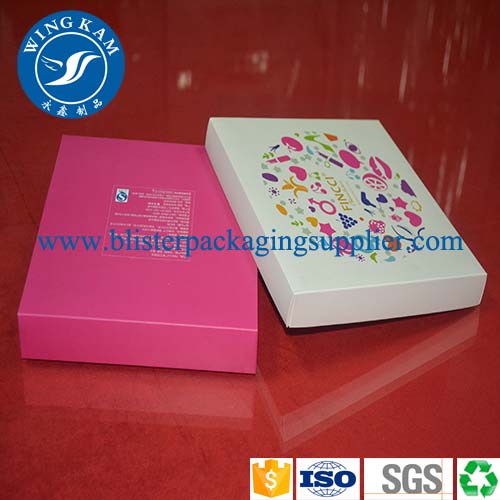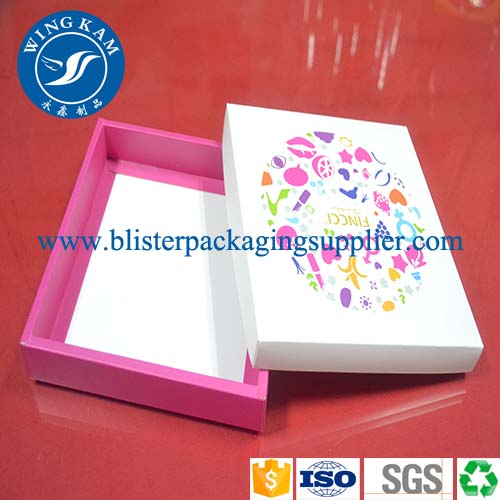The purchase of raw materials is an important part of the company's economic benefits, and the quality and technical performance of raw materials are also the key to product quality. In the soft packaging printing materials, ink quality and technical performance are the most important factors affecting the quality of packaging materials. As a technical personnel responsible for the procurement of raw materials for flexible packaging companies, the author intends to use gravure ink selection from the procurement perspective, including its applicability, economy and colleagues to jointly explore, in order to seek to attract attention.
First, the supplier's choice
The selection of upstream suppliers must be based on the internationally recognized ISO 9001 quality assurance system, first trials of inks, and conclusions based on the opinions of technology, production personnel, and customers. If the requirements are met, supply personnel and technical personnel are organized and the customer representatives are invited to conduct on-site inspections with multiple ink production companies. The specific contents include the production site, product performance, R&D strength, and customer satisfaction. Because the printability of inks is related to ambient temperature and humidity, the choice of ink supply companies must also consider the climate gap and prioritize companies with geographical proximity. According to the principles of "quality first, price purchasing", "equal price ratio, and equal price service", at least two ink production companies were selected to be included in the "qualified supplier list of raw materials" to achieve fixed-point procurement. The inspection of qualified suppliers shall be conducted every two years. The main assessment is product quality, technical performance, price, delivery time, technical service, and customer satisfaction. The assessment team shall consist of technology, production, supply, sales, and customers. Representatives and senior management staff. In particular, it focuses on inspecting the suppliers' technical services and communication capabilities. It can actively participate in the resolution of print quality problems and can assume its due responsibilities. We must pay attention to the importance of ink quality in packaging and printing, and strengthen the management of ink production enterprises as an upstream customer, and achieve "win-win development" in the value chain.
Second, the suitability of ink
When purchasing inks, first consider the suitability of the ink. The applicability of the ink should be based on the following aspects:
1. Printing substrate
Different resin printing substrates should use inks with different resin systems. The commonly used printing substrates include BOPP film, BOPET film, BOPA film, and PE film. According to the "similar compatibility" principle, only the matrix resin is similar or similar, and the printing substrate and the ink will have good adhesion. In the ink system, the binder resin plays a key role in adhesion. Gravure inks currently developed are classified into benzene solvent type inks, alcohol solvent type inks, and water solvent type inks. According to the binder resin is divided into chlorinated polypropylene ink, polyurethane ink, polyamide ink and so on. The chlorinated polypropylene ink is suitable for the printing of BOPP film; the polyurethane ink is suitable for the printing of BOPET film and BOPA film, and can be used for high temperature cooking and boiling; the polyamide ink is suitable for the surface printing of BOPP film and PE film.
2. Printing process conditions
The printing process conditions include the printing speed (line speed), drying capacity, plate roller performance, gravure printing mode (surface printing, in-print printing), printing color number, printing sequence, ambient temperature, humidity, and the like. The process conditions directly affect the transfer rate of the ink, the drying speed, etc., so the ink must be selected reasonably and economically according to the process conditions. For example, when the humidity at the production site is high and the printing speed is high, high-grade inks with high transfer rate and fast drying speed should be used to prevent the film from sticking after printing. Under the conditions of air drying and high printing speed, the ink with high viscosity and antistatic agent is used to avoid quality problems caused by static electricity.
3. Printing effect
Printing effects include the hue, glossiness, transparency, hiding, leveling, overprint accuracy of printed products. Different ink manufacturers have certain differences in terms of hue, solid content, viscosity, glossiness, level expression, etc. Even inks produced by the same manufacturer and different batches are not the same. Therefore, when doing the same product, after obtaining the customer's approval of the sample draft, as much as possible to purchase the same batch of ink as much as possible to ensure consistency with the sample.
4. Postpress process conditions
After the plastic film is printed, it needs to undergo processes such as extrusion compounding, dry compounding, vacuum aluminum plating, slitting, and bag making, and even high-temperature cooking, boiling, freezing, sterilizing, and the like during the use of the customer. Therefore, the ink should be selected according to the post-printing process conditions and application conditions of the packaging materials. For example, in the dry compounding, the adaptability of the ink and the adhesive in the printing ink should be considered without affecting the peeling strength of the compounded product. In the process of bag making, high-temperature cooking, boiling, freezing, etc., the high and low temperature resistance of the table printing ink should be taken into account to prevent problems such as detachment and discoloration of the ink film.
5. Customer's use conditions
As an organic system consisting of pigments, additives, binders, fillers, and solvents, inks are printed to form an ink film and adhere to a plastic substrate. As packaging materials for various products, not only play a marketing role to attract eyeballs, but also play a role in ensuring the quality of products and protecting the lives of consumers. Therefore, the choice of ink must first consider the health and safety of the ink, and tasteless, its resistance to meet the conditions of use of customers. Ink resistance includes light resistance, heat resistance, grease resistance, chemical resistance, and good compatibility with the packaged product. Table printing inks are resistant to friction, oxidation, water, and light, and have some antistatic properties. The additive added to meet the resistance of the ink should be hygienic and non-toxic; the filler that does not need to be added is not required.
Third, the economics of ink
The economics of ink include not only the purchase price but also the purchase quantity. According to the demand for materials provided by the production department and the "raw materials consumption quota" compiled by the technical department, the amount of ink purchased will be calculated. While achieving economic procurement as much as possible, it is also necessary to reduce the use cost based on actual production conditions. Because inks, especially toners, are different from other raw materials, once they are left over, it is very difficult to use them again and they have to give up and waste. Realizing the approach to “zero inventory†not only reduces the occupation of funds, but also selects the bias of the original color ink according to the customer's requirements, and ensures that the hue of the printed products is consistent. For example, the primary colors of red are partial red and purple, and the primary colors of blue are partial sky blue and partial purple. The primary yellow points are greenish and red. In the absence of artificial control of the temperature and humidity of the site environment, it is necessary to select inks containing different additives for different on-site environments, thereby reducing the increase in use costs caused by the temporary addition during the printing process. The ink is required to have a certain anti-static property, prevent the electrostatic adsorption of air generated by the friction with the plate roller, as well as foreign matter such as hair, dust and the like in the environment, resulting in print quality problems. Flexible packaging companies should strengthen communication and understanding with ink production companies, let ink production companies fully understand their own printing equipment, including printing speed, printing substrates, drying methods and capabilities, on-site environment, composite adhesives, end-user requirements and The packaged products, etc., are conducive to the formulation of suitable inks. In addition, in order to achieve product quality controllability and traceability, each batch of ink must be shipped and inspected quality inspection, including viscosity, fineness, solids content, appearance and other items.
Source: Graphic Arts
Paper Box PackagingWing Kam Packaging Co.,Ltd. was established in 2001, we are manufacturer and support custom design. We specialize in this Paper Box Packaging/paper box packs.Our value message is "QUALITY IS OUR LIVE, WITHOUT QUALITY, WITHOUT US." If you order this Paper Box Packaging(paper drawer box) from us, YOUR BUSINESS WILL BE SAFE, YOUR MONEY WILL BE SAFE, YOUR PRODUCT OUT LOOK WILL BE GORGEOUS.
ItemPaper Box PackagingDimensionCustomizedMaterialPVC, PETThickness200~2100gCardboard InsertYes, CustomizedMOQ3000pcsSample orderWelcome & acceptable
Product Pictures Show:



 Welcome to order Paper Box Packaging. Any questions please contact us freely.
Welcome to order Paper Box Packaging. Any questions please contact us freely.
Square Shape Paper Box Packaging,Cardboard Box Packaging, Rectangle Shape Box Packaging,Art Paper Box Packaging
Shenzhen City Wing Kam Packaging Products Co., Ltd. , http://www.blisterpackagingsupplier.com
![<?echo $_SERVER['SERVER_NAME'];?>](/template/twentyseventeen/skin/images/header.jpg)